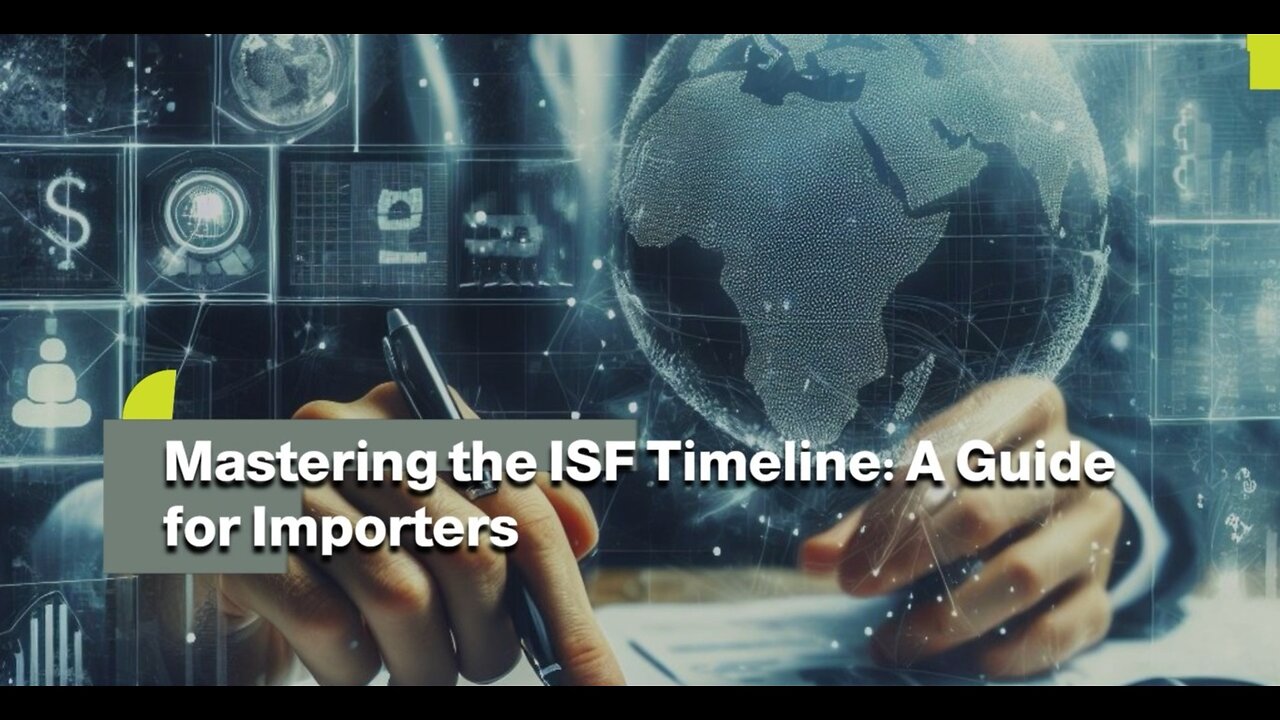Premium Only Content

Avoid Delays and Penalties: Navigating the ISF Submission Process
ISF Template | 562-453-7357 | [email protected] | www.isftemplate.com
The ISF timeline for importers is crucial for ensuring efficient and secure international trade. The process begins with the receipt of the purchase order, where importers need to obtain all necessary information from suppliers and manufacturers. Five days before the cargo departure, the initial ISF filing, also known as the 10% rule, must be submitted with basic information about the shipment. It is important to submit this filing accurately and on time to avoid penalties.
Two days before loading, additional ISF information, such as the container stuffing location and consolidator details, needs to be provided. Once the cargo is loaded onto the vessel, the bill of lading or booking number should be submitted to complete the ISF filing. When the cargo arrives at the US port, CBP conducts risk assessments, and timely and accurate ISF filing helps expedite this process.
To ensure a smooth ISF submission process, working with experienced customs brokers is recommended. They have comprehensive knowledge of customs regulations, documentation requirements, and the ISF timeline. Importers should obtain accurate information from suppliers and shippers, perform regular data validation, maintain proper documentation, and work closely with customs brokers to ensure compliance with customs regulations.
In conclusion, understanding and following the ISF timeline is crucial for importers to avoid delays, penalties, and non-compliance issues. By submitting accurate and timely information at each stage, importers can help CBP facilitate safe and secure international trade. It is important to stay updated with any changes in customs regulations and to work closely with customs brokers to navigate the complexities of the import process. #usimportbond #isfcustomsbroker #uscustomsclearing #isfentry
-
 LIVE
LIVE
TimcastIRL
35 minutes agoLIVE Election Coverage: Polling Stations SWATTED, Bomb Threats Called In | Timcast IRL
22,035 watching -
 LIVE
LIVE
The Charlie Kirk Show
2 hours agoJUDGMENT DAY 2025: The Election Results Stream
10,640 watching -
 LIVE
LIVE
MattMorseTV
3 hours ago $13.82 earned🔴Election Day LIVE COVERAGE.🔴
2,097 watching -
 LIVE
LIVE
Professor Nez
5 hours ago🚨ELECTION NIGHT 2025 LIVE! Massive Upsets Brewing in New York, New Jersey & Virginia!
133 watching -
 LIVE
LIVE
Due Dissidence
8 hours agoLIVE: ELECTION RESULTS From NYC, NJ, and VA - Trump Approval CRATERS, Kash's Private Jet CRASH OUT
1,226 watching -
 12:50
12:50
Demons Row
1 hour agoBikers of New Jersey 💀🏍️ Pagans, Thunder Guards, and Thug Riders
7 -
 42:31
42:31
Stephen Gardner
4 hours ago🔥Old Obama Video RESURFACES - His Own Words CONDEMNED Him! Trump Gains MASSIVE Momentum!!
5.33K11 -
 LIVE
LIVE
LFA TV
23 hours agoLIVE & BREAKING NEWS! | TUESDAY 11/4/25
601 watching -
 1:03:37
1:03:37
BonginoReport
3 hours agoElection Night Showdown Spotlight - Nightly Scroll w/ Hayley Caronia (Ep.170)
82.8K20 -
 LIVE
LIVE
Edge of Wonder
3 hours agoSupernatural Forces & Giants Built Great Pyramid of Egypt
201 watching